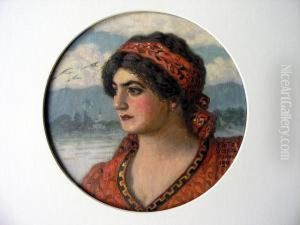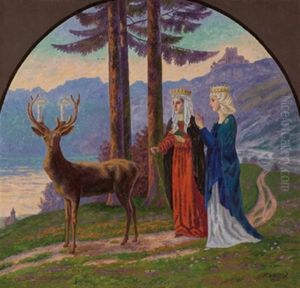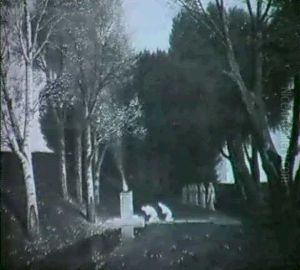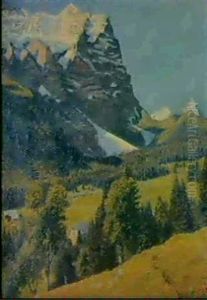Fritz Voirol Paintings
Fritz Voirol was a Swiss painter and graphic artist born on February 22, 1891, in Biel/Bienne, Switzerland. His artistic journey began in his early years, influenced by the cultural richness of his homeland. Voirol's work, deeply rooted in the Swiss artistic tradition, spanned several decades of the 20th century, a period marked by significant upheavals and transformations in the art world. Despite the changing art scenes across Europe, Voirol maintained a distinctive style that captured the essence of his Swiss heritage while embracing modernist elements. Voirol's artistic career was characterized by a commitment to exploring the nuanced interplay of light and shadow, a theme that recurred throughout his body of work. His paintings often depicted landscapes, urban scenes, and still lifes, rendered with a sensitivity to the atmospheric conditions of his subjects. This sensitivity was not just a technical achievement but also a reflection of Voirol's deep connection to his environment. He had a keen eye for capturing the transient moments of everyday life, imbuing his works with a sense of immediacy and intimacy. Beyond his paintings, Fritz Voirol was also known for his graphic art, which included illustrations, posters, and prints. His graphic works demonstrated a clear, concise line and a mastery of form that complemented his painted oeuvre. Voirol's versatility across mediums contributed to his reputation as a significant figure in Swiss art, particularly in the early to mid-20th century. Despite not gaining the same level of international fame as some of his contemporaries, his work was appreciated for its technical skill and emotional depth. Throughout his career, Fritz Voirol participated in numerous exhibitions, both solo and group, that showcased the breadth of his talent. His contributions to Swiss art were recognized by his peers and critics alike, and his works are held in private collections and museums across Switzerland. Voirol's legacy is that of an artist who remained true to his vision, capturing the beauty and complexity of the world around him with a quiet intensity. He passed away on March 4, 1953, in Biel/Bienne, leaving behind a body of work that continues to inspire admiration and respect for its artistic integrity and expressive power.



